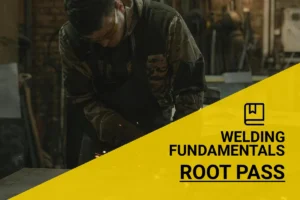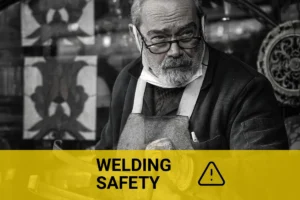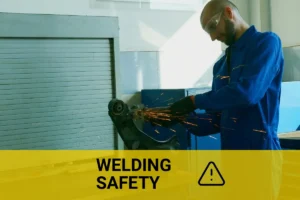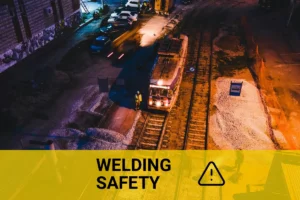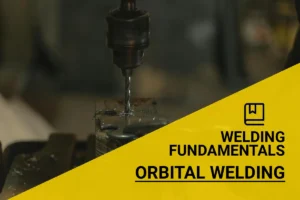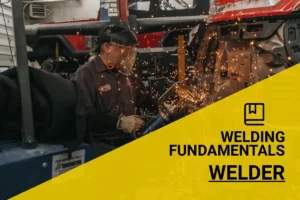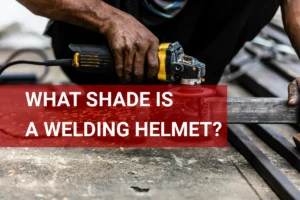What is MAG Welding? Discover the Process, Applications, and More!
Published on: May 11, 2025 | Last modified: March 4, 2025
By: Joe Carter
MAG welding is a popular welding technique. It’s mainly used for metal-arc welding with active gas mixtures.
So, what is mag welding? Following safety measures during this process is crucial. From my own experience, skipping proper precautions can lead to accidents, so I always double-check my gear and settings before starting. Knowing what you’re doing keeps both you and your work safe!
In this guide, I’ll cover what is mag welding process, how it works, its different types, the steps involved, factors that affect it, common problems you might face, and tips for aftercare. We’ll also discuss applications of mag welding and a look at alternatives available today. You’ll get a full picture of what you need to know about this welding style.
Contents
- What is MAG Welding?
- How Does MAG Welding Work?
- Types Of MAG Welding
- Steps for MAG Welding
- Understanding the Benefits of MAG Welding
- Factors Affecting MAG Welding
- Typical Problems to Be Aware Of
- Aftercare, Inspection, and Advanced Tips for Mag Welding
- Applications Of Mag Welding
- Exploring Alternatives to Mag Welding
- Frequently Asked Questions (FAQs)
- Conclusion
- References
What is MAG Welding?
MAG welding is a gas metal arc welding process using a mixture of gases. It’s efficient for steel construction and automotive industries because it provides strong welds with minimal cleanup. You’ll find it in manufacturing, repairs, and production lines. Understanding the cost and selection of welding rods can be crucial for optimizing welding projects effectively.
How Does MAG Welding Work?
MAG welding, or Metal Active Gas welding, is a type of MIG (Metal Inert Gas) welding. It uses a continuous wire electrode and a shielding gas to protect the weld pool. This process typically operates at voltages between 15 and 30 volts and currents of 20 to 400 amperes. MAG welding is effective on materials thicker than 1 mm (0.04 Inches), making it a preferred choice for many industrial applications.
This welding technique protects welds from atmospheric contamination. The active gas, such as carbon dioxide, enhances weld quality and ensures a stable arc. Experienced welders note its versatility across various metals, making it a crucial skill to master.
I can’t stress how vital understanding the MAG welding process is for quality results. In my experience, becoming comfortable with this technique leads to fewer weld defects, ultimately saving time and money. Whether you’re working on steel or aluminum, mastering MAG welding will significantly elevate your skills.
Types Of MAG Welding
What are the types of MAG welding?
Gas Metal Arc Welding (GMAW)
GMAW is a welding process using a continuous wire feed. You create a weld by feeding a wire into a weld pool. This method mixes a shielding gas, like argon or carbon dioxide, with the welding wire to protect the weld from contamination. It’s crucial to choose the right equipment as different types of welding require specific considerations, and you can determine what kind of welder is necessary for your project.
Flux Cored Arc Welding (FCAW)
FCAW involves a tubular wire filled with flux that provides shielding during welding. Unlike GMAW, this technique can operate with or without external gas. You feed the tubular wire into the weld pool while the flux generates gases and slag to protect the molten metal.
Submerged Arc Welding (SAW)
SAW is a process where the arc is submerged beneath a layer of granular flux. This method offers deep penetration and high welding speeds. You feed a continuously moving solid wire electrode into a molten weld pool while the flux covers it to prevent contamination. Understanding the electrical requirements is crucial for optimal operation, including knowing how many amps a welder uses.
Electrode Arc Welding (EAW)
EAW uses a consumable electrode to create an arc between the electrode and the workpiece. This method generates some shielding gases. To perform EAW, you strike an arc, and as the electrode melts, it adds filler metal to the weld joint, joining the pieces effectively.
Tungsten Inert Gas Welding (TIG)
TIG employs a non-consumable tungsten electrode to produce the weld. This allows precise control of heat and the weld pool. In TIG, you maintain a steady arc between the tungsten electrode and base metal while feeding filler material as needed to join the components.
We’ve wrapped up the different types of MAG welding here. Next up, we’ll look at the steps for MAG welding.
Steps for MAG Welding
Here are the steps to understand the MAG welding process in detail.
Set Your Equipment
First, identify and set up your MAG welder. Set the voltage between 15-30 V, depending on your material. Adjust the wire feed speed to around 4-15 meters per minute (131.2-492.1 In/min) based on the metal thickness. If you don’t configure these settings, you risk poor weld quality or burn-through.
The right settings greatly impact the weld. Testing on scrap material saves headaches later. Check for discrepancies between metal types, using different settings for mild steel and stainless steel.
Choose Your Shielding Gas
Select the appropriate shielding gas. A mix of Argon and CO2 is common, often in a ratio of 75% Argon to 25% CO2. This combination provides optimal protection against contamination and ensures a stable arc. The gas flow rate should ideally be around 10-15 liters per minute (2.64-3.96 Gallons Per Minute).
The right gas mixture significantly improves the speed and strength of your welds. Even slight variations in proportion can drastically change results, especially with thicker materials. Stick to recommended ratios to avoid air contamination during the weld.
Initiate the Welding Arc
Once everything’s ready, initiate the welding arc by bringing the electrode wire close to the workpiece. Ensure there’s a correct distance—around 5-10 mm (0.2-0.4 In)—between the nozzle and the workpiece for a stable arc. Stay too far, and the arc may extinguish; stay too close, and the weld can get messy.
Keep a steady hand while moving the welder along the joint. Consistent speed affects the heat input, which directly influences the weld’s penetration. To enhance your skills, consider following detailed welding guidance and practice on pieces that replicate your actual project until you’re confident.
Understanding precise alignment in edge joint welding is crucial for achieving strong and clean results. To gain further knowledge on effective techniques, explore how to weld an edge joint.
Control Travel Speed
Maintaining the right travel speed is essential in the MAG welding process. Aim for about 200-500 mm/min (7.87-19.69 In/min) for medium-thickness metals. Adjust your speed based on conditions and material thickness—slower speeds increase heat input and penetration, while faster speeds may lead to weak joints.
If you see excessive spatter or inconsistent bead width, reduce your speed slightly. Speed regulation greatly influences the weld’s integrity. Testing different speeds on scrap pieces helps you find the optimal speed.
Finish the Weld
As you finish the weld, lift the electrode away from the workpiece. Maintain the arc until you’ve pulled the electrode away approximately 20-30 mm (0.79-1.18 In) to create a stable molten pool. This technique helps achieve a strong final bead without defects, crucial for any project. Selecting the appropriate current settings is also essential for optimal performance, and you can learn more about the required amps for a 3/32 welding rod.
After cooling, check the bead for uniformity. An even width indicates a good weld bead; any irregularities may require a re-weld. Inspecting the bead as you go saves time and enhances quality.
We’ve wrapped up the steps for MAG welding here. Next up, we’ll look at the benefits of MAG welding.
Understanding the Benefits of MAG Welding
Let’s dive into why you should consider MAG welding for your projects.
Key Advantages
- Speed of Operation: MAG welding typically runs at higher speeds than other methods, saving you time. Expect weld rates of roughly 2-4 meters (6.56-13.12 feet) per minute for thicker materials.
- Strong Welds: It produces robust welds with great fusion. You can achieve tensile strengths around 400 MPa (58,000 psi) on mild steel.
- Versatility: MAG welding works on various materials—steel, aluminum, and stainless steel. This makes it adaptable to different industries and applications.
- Less Cleanup: With its efficient shielding, you’ll have reduced slag and spatter. This means less time spent cleaning after your work.
- Reduced Distortion: This technique generates less heat, minimizing thermal distortion. Maintaining accuracy in your project becomes simpler.
Economic Considerations
Want to know how MAG welding affects your budget? Check this out:
| Factor | MAG Welding | Traditional Methods |
|---|---|---|
| Material Cost | Lower due to faster operation | Higher, due to longer operation time |
| Labor Cost | Reduced hours for similar volume | Increased hours lead to higher costs |
| Overall Project Cost | More economical | Potentially more expensive |
With these benefits, it’s clear that exploring MAG welding could save you time and money. So next time you’re tackling a welding project, consider the advantages of this method!
You should now have a good understanding of the advantages of MAG welding. In the next part, we’ll discuss the factors influencing MAG welding.
Factors Affecting MAG Welding
What factors influence the efficiency and results of MAG welding?
Base Material Properties
The type of material affects weld quality. For example, steel has melting points around 1,400°C (2,552°F), while aluminum melts at 660°C (1,220°F). This variation determines voltage and wire feed speeds during welding. Understanding the concepts behind a complete joint penetration weld can deepen your knowledge of how welding processes adapt to different materials.
Welding Position and Angle
The position you’re in matters. Flat positions usually allow for better control, reducing defects. When standing or working at an angle, you may need to adjust your technique, affecting heat input and penetration.
Environmental Conditions
The environment significantly impacts welding success. Factors like wind and humidity can disrupt shielding gas, leading to contamination. Poor conditions likely result in increased porosity or complete joint failure. Understanding these factors is crucial in reading welding blueprints.
Shielding Gas Composition
Different shielding gas mixtures affect arc stability and metal transfer. Using 75% Argon and 25% CO2 provides better penetration than CO2 alone. Adjusting the mix enhances penetration or reduces spatter.
Electrode and Wire Feed Speed
Wire feed speed determines metal deposition. For instance, a speed of 5-10 meters per minute yields different weld bead profiles. Faster feed results in more heat and wider beads, while slower speeds create narrower welds.
You should now have a good understanding of factors influencing MAG welding. In the next part, we’ll discuss common issues to consider.
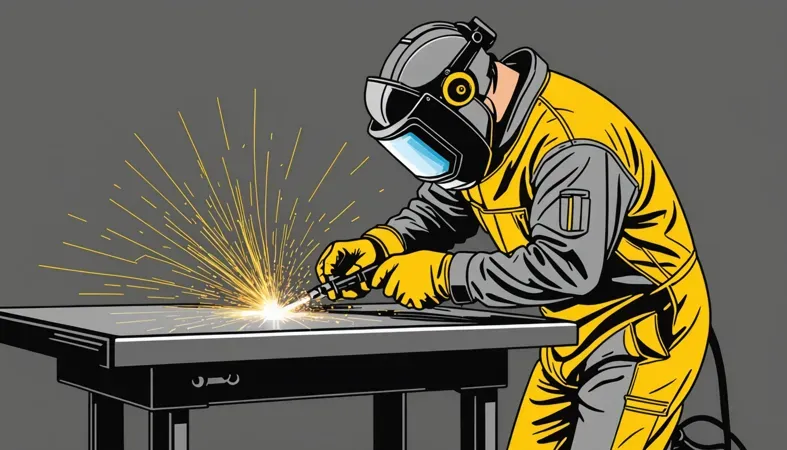
Typical Problems to Be Aware Of
Let’s look at the unique issues related to MAG (Metal Active Gas) welding.
Poor Penetration
MAG welding often suffers from poor penetration. You’ll know there’s an issue if the weld doesn’t properly fuse with the base materials. To fix this, raise your amps to about 20% more than recommended. Also, check your travel speed—slowing down helps.
Weld Porosity
Porosity can be a major issue with MAG welding. You’ll spot tiny gas pockets in the weld. Avoid rust and keep the area clean. Increase the shielding gas flow and check your gas mixture—using a 75/25 argon/CO2 mix can help. To further understand how to address porosity issues, you can explore this resource on welding porosity causes.
Inconsistent Weld Bead
In MAG welding, an inconsistent weld bead may appear uneven or lumpy. This often results from varying travel speed or voltage settings. Keep your travel speed steady and adjust the voltage to the manufacturer’s recommendations for a uniform bead.
Overheating Of Materials
MAG welding can cause overheating, damaging the material’s integrity. Check for warping or discoloration. Control the heat by using optimal amperage settings and shorter bursts to maintain the temperature.
Electrode Contamination
Electrode contamination occurs when impurities are on your wire. You’ll notice burn-off or buildup that affects weld quality. To resolve this, clean electrodes thoroughly. Use solvents or wire brushes to remove debris before starting to weld.
Aftercare, Inspection, and Advanced Tips for Mag Welding
Here’s crucial advice to keep your mag welding projects in top shape.
Aftercare Tips
After a mag welding job, always clean the weld zone with a wire brush (No. 3-4) to safely remove slag. Allow at least 20 minutes for the joint to cool below 200°C (392°F) to avoid warping. Letting it normalize prevents distortion, so the recommended cooling time varies by material thickness.
Inspection
Inspect welded joints with a calibrated magnetic particle inspection (MPI) kit for flaws. Use a specific product like the Mag-Flux 200 Series for quick results. Always check for gaps under 0.5 mm; they’re indicators of improper penetration or weak bonds.
Expert Tips
If you’re experienced, like me, work with a travel speed of 500 mm/min (19.7 In/min) and keep your voltage between 23-25 V for greater precision. Use argon-carbon dioxide mixes to improve arc stability; a 75-25% ratio can yield a cleaner bead. Consider preheating steel to 100°C (212°F) for better fusion, especially with thicker sections.
Applications Of Mag Welding
I’ve used mag welding for various tasks. It has many applications, such as:
- Automotive Industry: Mag welding’s great for joining car frames. It’s fast and strong, making it popular for mass production.
- Shipbuilding: I’ve seen mag welding used on ship hulls. It creates effective high-strength joints that withstand harsh marine conditions.
- Manufacturing Heavy Equipment: Mag welding builds heavy machinery. The stable arcs ensure solid connections in tough environments.
- Construction of Rail Cars: Mag welding’s ideal for fabricating rail cars. It provides the robust welds necessary for safety and durability.
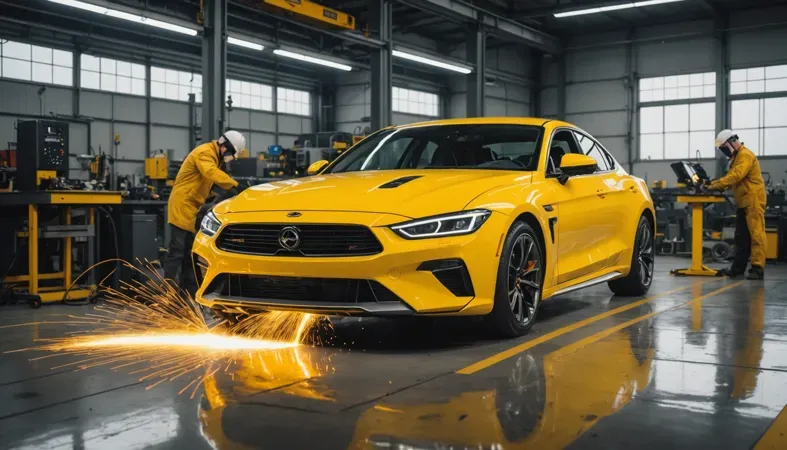
Exploring Alternatives to Mag Welding
There are effective alternatives to achieve similar results as mag welding. Some popular methods include MIG welding and TIG welding. For instance, products like the Lincoln Electric Power MIG 210MP are great for versatility, while the Miller Diversion 180 excels in finer control.
One thing I’ve come to realize is that choosing the right process often depends on your project needs. If you’re welding thin materials, TIG might be the way to go due to its precision. Conversely, if speed is crucial, MIG can save you time without sacrificing quality.
Frequently Asked Questions (FAQs)
Here are some questions I typically get asked about MAG welding.
What’s the Difference Between MIG and MAG Welding?
Yes, there’s a difference between MIG and MAG welding. MIG (Metal Inert Gas) uses an inert gas like argon while MAG (Metal Active Gas) uses active gases, often CO2 or a mix, which can make a difference in weld penetration and spatter. MIG is more suited for non-ferrous metals, while MAG excels with ferrous metals.
Is MAG Welding the Same As Stick Welding?
No, MAG welding isn’t the same as stick welding. Stick welding uses a consumable electrode coated in flux, and it typically requires a slower process. In contrast, MAG welding uses a continuous wire electrode that allows for quicker production rates and better control over heat and penetration.
What Are the Advantages Of MAG Welding?
The advantages of MAG welding include fast welding speeds and versatility in various materials. You can weld metals such as steel and stainless steel efficiently. Additionally, MAG offers better protection against outdoor elements, making it ideal for both indoor and outdoor applications.
What is the Difference Between MAG and TIG Welding?
The difference between MAG and TIG welding lies mainly in the process and versatility. MAG welding is often faster and better for thicker metals, while TIG (Tungsten Inert Gas) provides cleaner, more precise welds, making it suitable for thin materials or delicate work. Each method has its specific applications based on the metal and project requirements.
What Does MAG Stand for in Welding?
MAG stands for Metal Active Gas in welding. It refers to a welding process that uses a combination of active shielding gases, like CO2, which help improve weld quality. This process provides better control over the puddle and enhances penetration compared to inert gas methods.
What is MAG Welding Used for?
MAG welding is used for numerous applications in industries like automotive, construction, and shipbuilding. It’s particularly effective for welding carbon steels and low-alloy steels, which are common in structural components. This versatility allows MAG to meet diverse welding needs.
Conclusion
I’m glad we could cover this together. We discussed what is MAG welding, how it works, the types of MAG welding, and its applications. We also touched on steps for MAG welding, factors affecting it, typical problems to be aware of, and aftercare tips.
Happy to wrap it up by revisiting what MAG welding is. In simple terms, it’s a process that uses a gas shield to join metals, often applied in construction and automotive industries. So, whether you’re looking at a skilled job or curious about how it all connects, you now know about the MAG welding process and its important elements—all essential for working safely and effectively.
For those interested in expanding their knowledge of various welding techniques, feel free to explore What is Welding.
References
- American Welding Society. (2020). AWS Welding Handbook: Welding Science and Technology (Vol. 1). Miami, FL: AWS.
- Howard B. Cary. (1997). Welding Manual. Upper Saddle River, NJ: Prentice Hall.
- British Standards Institution. (2018). BS EN ISO 9606-1: Qualification Testing of Welders. London, UK: BSI.
Joe Carter is a retired welding professional with over 40 years of hands-on experience in the industry, spanning ship repair, structural welding, and even underwater projects. Joe is a master of MIG, TIG, and Stick welding. Passionate about mentoring the next generation of welders, Joe now shares his decades of expertise and practical insights to help others build rewarding careers in welding.
American Welding Society, Gas Metal Arc Welding, Industrial Applications, MAG Welding, MIG Welding, Safety Measures, Welding, Welding Process, Welding Techniques, Welding Wire
